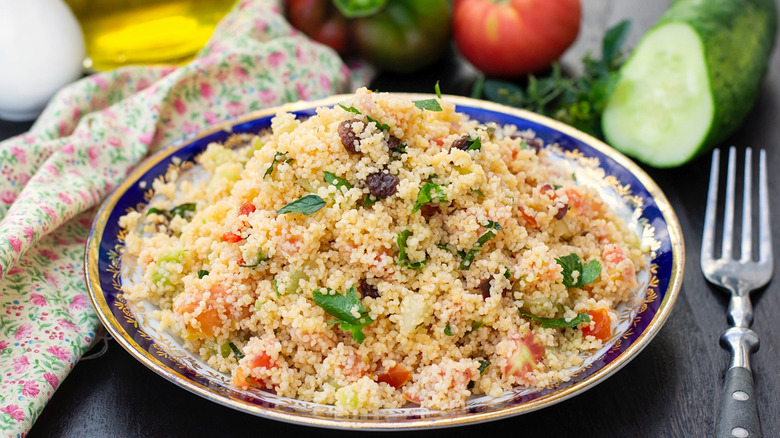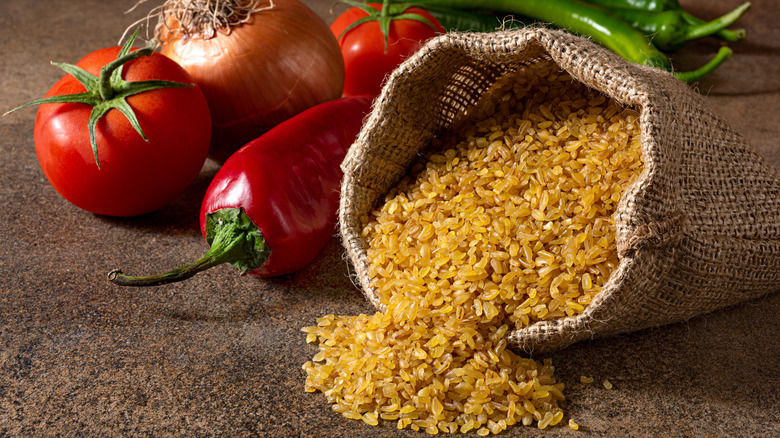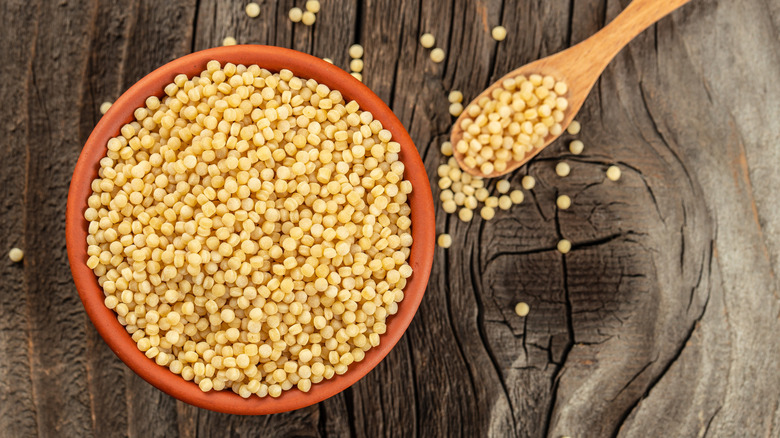Bulgur Vs Couscous: What's The Difference?
In Mediterranean and Middle Eastern pantries, bulgur and couscous are two staples that appear strikingly alike — but that's as far as the similarities go. When you delve into their respective origins, preparation methods, and nutritional profiles, they couldn't be more different. Both are made from wheat, but whereas bulgur is a type of cracked wheat that has been parboiled, couscous is actually a type of pasta and not a grain, contrary to popular belief. Bulgur's preparation method renders a distinct nuttiness to the grain, making it a perfect base for quintessential dishes in Middle Eastern cuisine, like tabbouleh.
On the other hand, couscous essentially consists of steamed balls of semolina flour which produces its characteristic, pasta-like chew. Couscous is most familiar to North African cuisine where it's often served with spiced, savory stews as it readily absorbs the aromas, infusing each bite with bursts of rich flavors. Owing to their unique properties, bulgur and couscous are suitable choices for different recipes depending on the desired outcome of the dish.
The scoop on bulgur
In the category of ancient grains, bulgur is one of the most versatile and nutritious. It has been central to Middle Eastern cuisine for centuries, and quickly gained a reputation as a "health food" across Western Europe. As bulgur is parboiled and dried before packaging, it's faster to cook when compared to its whole wheat counterparts. Parboiling also contributes to its longer shelf life. Bulgur is available in different grades ranging from fine to coarse, and each serves a purpose in different preparations, from Turkish köftes to a hearty pilaf.
Unlike refined grains, this whole grain retains most of its bran and germ layers, which boosts its nutritional profile and makes it an excellent source of fiber, protein, iron, vitamins, magnesium, and other essential nutrients. It also has a low glycemic index, making it a suitable alternative to rice. For a hearty meal, consider swapping out wild rice for bulgur in an autumnal stuffed acorn dish for an equally enjoyable, nutritional, plant-based centerpiece at the table.
The deal about couscous
Couscous is a staple in North African cuisine, and each region has developed its own preparation methods and serving traditions. There are several varieties of couscous but the most common ones are Moroccan, Israeli, and Lebanese — in increasing order of size of the couscous balls. Each variety offers different textures and preparation methods. Cooking small-grain Moroccan couscous is a quick process, sometimes requiring just a brief steep in hot water. This makes it great for meal-prepping salads and grain bowls, or to serve with an authentic Moroccan tagine.
On the contrary, Israeli and Lebanese couscous, often called pearl couscous, needs to be boiled in water like pasta to obtain its desirable chewy texture and satisfying bite. Because of its larger size, it's a suitable option for a hearty salad or mixed into a warm bowl of soup to boost satiety. Couscous is also known for being a good source of selenium, fiber, plant protein, and sometimes, a healthier alternative to rice.


